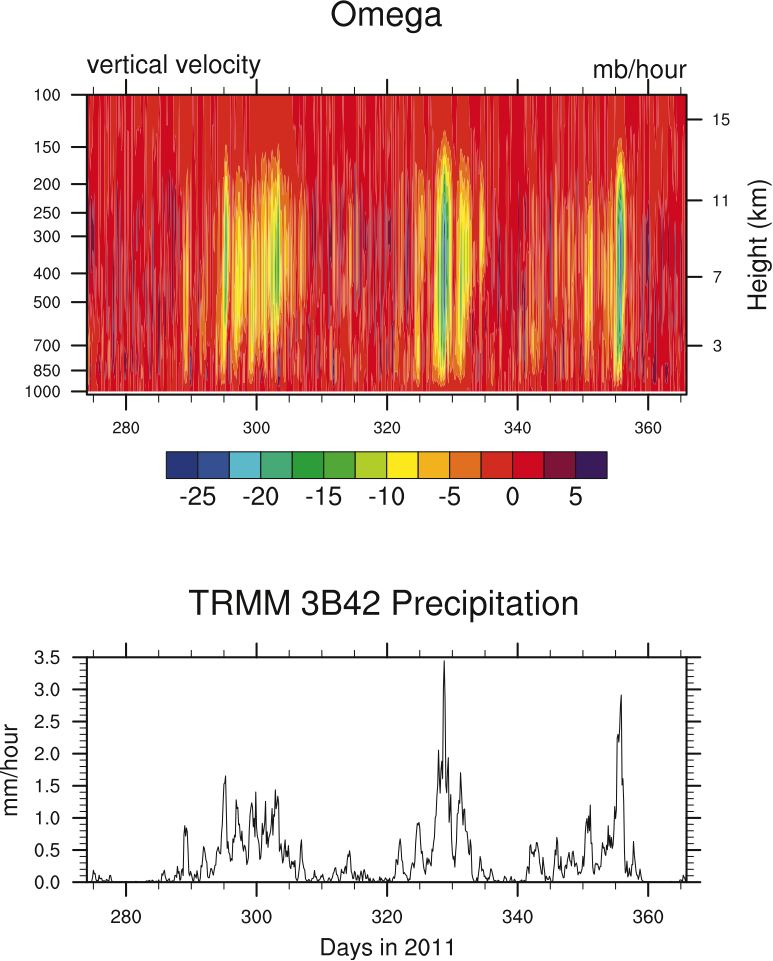Large-Scale Forcing Data Collected During DYNAMO/AMIE Now Available for Evaluation
Published: 25 August 2015

Forcing data were developed based on gridded-sounding data from Paul Ciesielski at Colorado State University. Data were then constrained with observed surface rainfall from precipitation radar measurements through the variational objective analysis. The measured upper-air data were first analyzed with the background field from the European Centre for Medium-Range Weather Forecasts (ECMWF) analysis data. The domain-averaged surface and radiative fluxes and surface heat flux constraints, required by the variational analysis, were obtained from ECMWF forecast data.
Analysis data cover the period from October 1 to December 31, 2011. The forcing data set represent an average over the analysis domain centered at the southern tip of India with a diameter of 550 kilometers. The data sets are in both ASCII and netCDF formats.
As always, feedback and use of the data are welcomed and encouraged. For questions or to report data problems, please contact Shaocheng Xie or Yunyan Zhang.
To access the ARM North Sounding Array forcing data set, log into the ARM Data Archive. Go here to request an account.
# # #
The ARM Climate Research Facility is a national scientific user facility funded through the U.S. Department of Energy’s Office of Science. The ARM Facility is operated by nine Department of Energy national laboratories, including Lawrence Livermore National Laboratory, which provides value-added product and data development, and Pacific Northwest National Laboratory, which manages Data Management Facility that processes raw data from all the ARM research sites.
The ARM Climate Research Facility is a DOE Office of Science user facility. The ARM Facility is operated by nine DOE national laboratories, including .
Keep up with the Atmospheric Observer
Updates on ARM news, events, and opportunities delivered to your inbox
ARM User Profile
ARM welcomes users from all institutions and nations. A free ARM user account is needed to access ARM data.


















